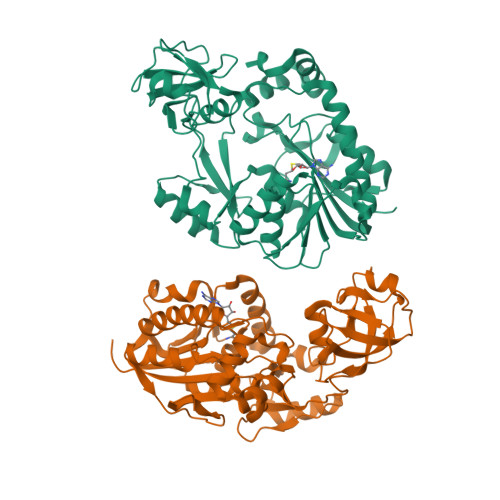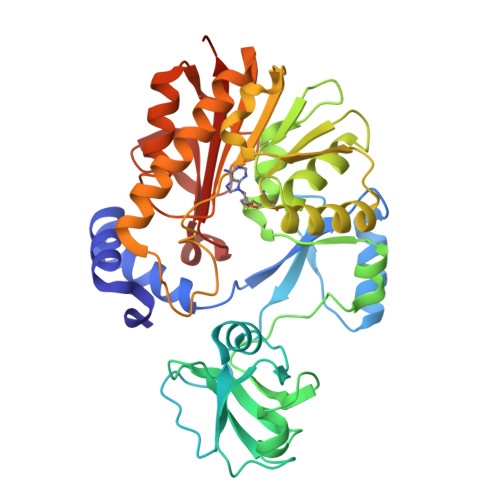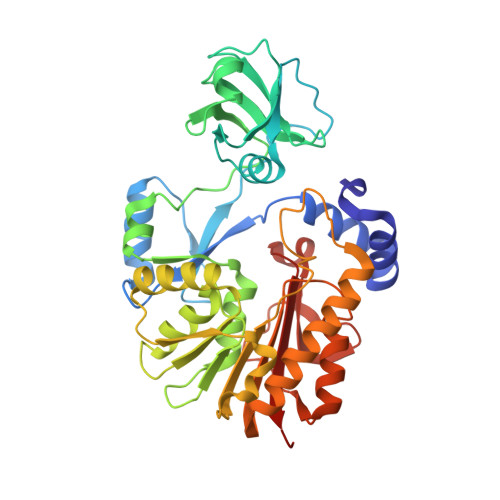Archaeal NSUN6 catalyzes m5C72 modification on a wide-range of specific tRNAs.
Li, J., Li, H., Long, T., Dong, H., Wang, E.D., Liu, R.J.(2019) Nucleic Acids Res 47: 2041-2055
- PubMed: 30541086
- DOI: https://doi.org/10.1093/nar/gky1236
- Primary Citation of Related Structures:
5ZVD, 5ZVE, 5ZVG, 5ZVH - PubMed Abstract:
Human NOL1/NOP2/Sun RNA methyltransferase family member 6 (hNSun6) generates 5-methylcytosine (m5C) at C72 of four specific tRNAs, and its homologs are present only in higher eukaryotes and hyperthermophilic archaea. Archaeal NSun6 homologs possess conserved catalytic residues, but have distinct differences in their RNA recognition motifs from eukaryotic NSun6s. Until now, the biochemical properties and functions of archaeal NSun6 homologs were unknown. In archaeon Pyrococcus horikoshii OT3, the gene encoding the NSun6 homolog is PH1991. We demonstrated that the PH1991 protein could catalyze m5C72 formation on some specific PhtRNAs in vitro and was thus named as PhNSun6. Remarkably, PhNSun6 has a much wider range of tRNA substrates than hNSun6, which was attributed to its tRNA substrate specificity. The mechanism was further elucidated using biochemical and crystallographic experiments. Structurally, the binding pocket for nucleotide 73 in PhNSun6 is specific to accommodate U73 or G73-containing PhtRNAs. Furthermore, PhNSun6 lacks the eukaryotic NSun6-specific Lys-rich loop, resulting in the non-recognition of D-stem region by PhNSun6. Functionally, the m5C72 modification could slightly promote the thermal stability of PhtRNAs, but did not affect the amino acid accepting activity of PhtRNAs.
Organizational Affiliation:
State Key Laboratory of Molecular Biology, CAS Center for Excellence in Molecular Cell Science, Shanghai Institute of Biochemistry and Cell Biology, Chinese Academy of Sciences; University of Chinese Academy of Sciences, 320 Yueyang Road, Shanghai 200031, P.R. China.




















